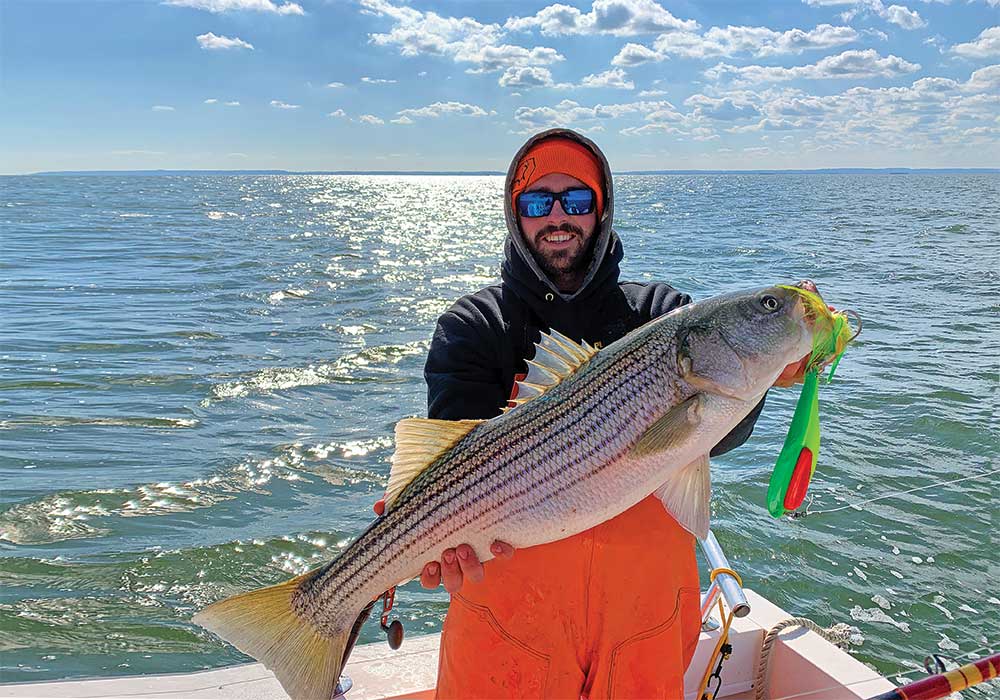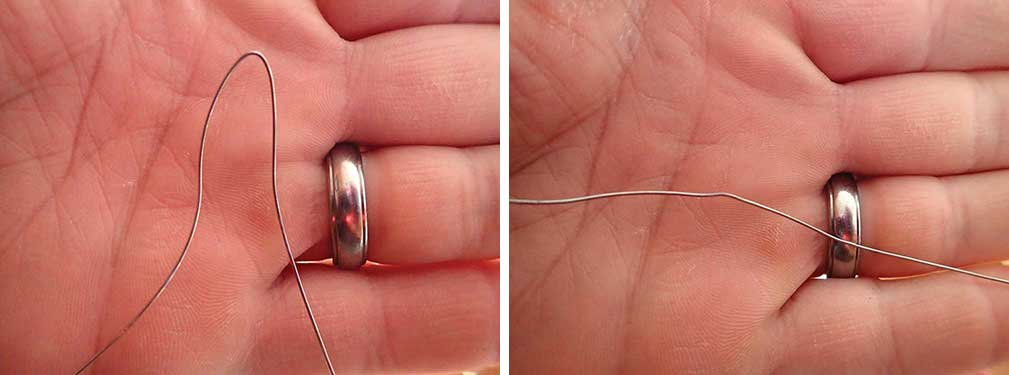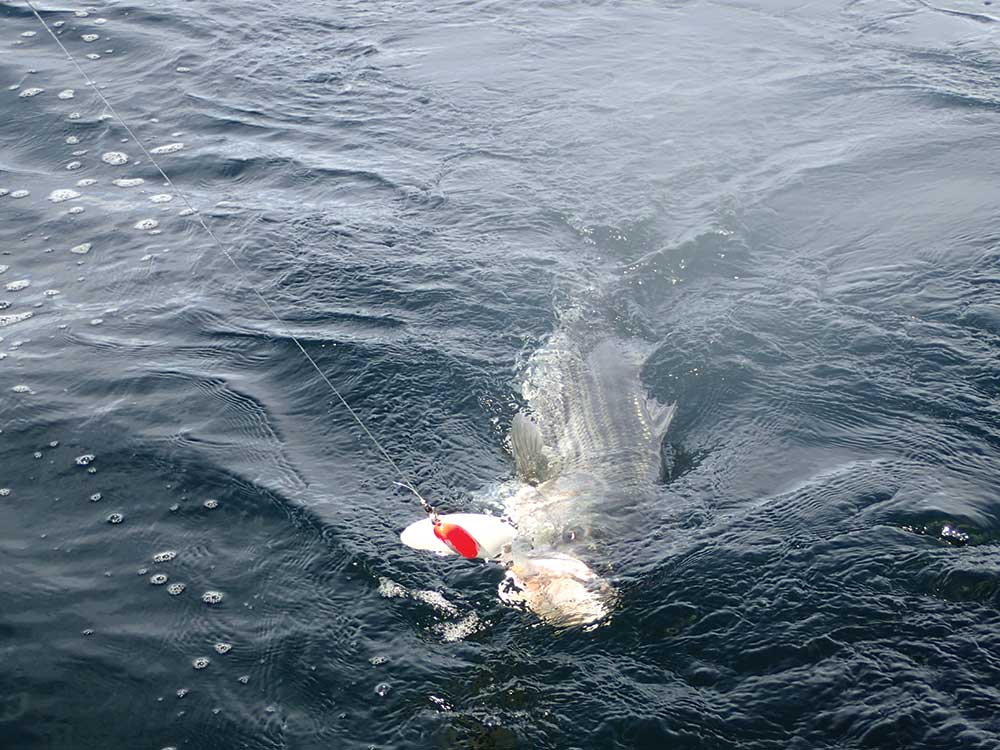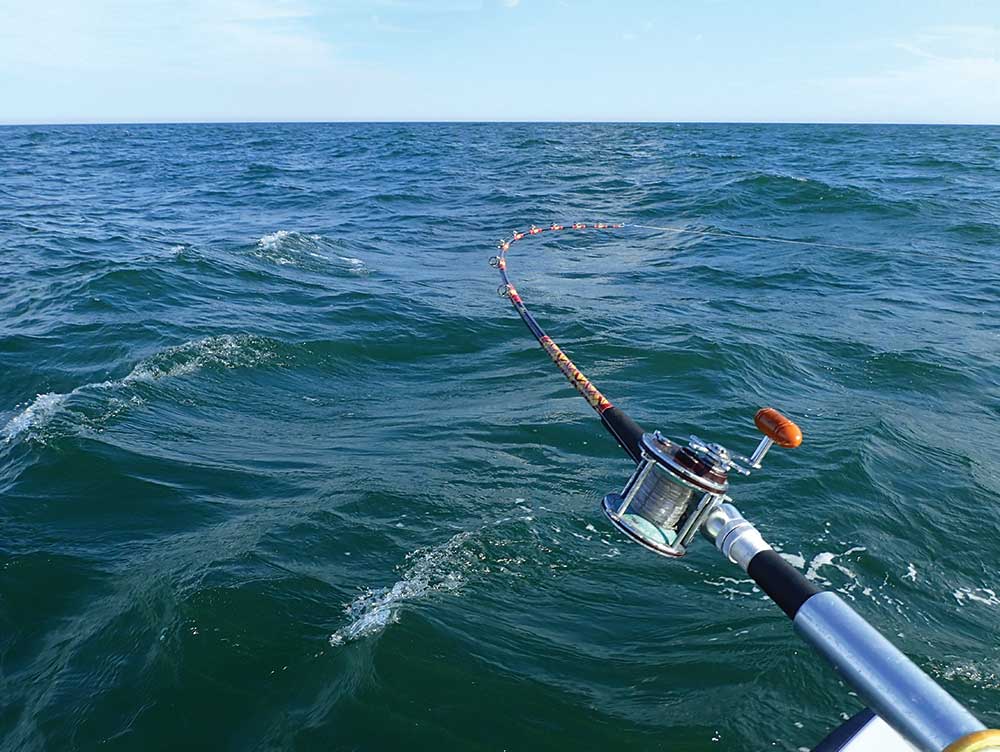
You have nothing to fear, but success itself.
I can’t tell you how many calls I’ve received over the years asking, almost begging to hear it said out loud, that wire isn’t necessary to run a trolling spoon set up for striped bass. It’s as if some anglers want affirmation that their braid or monofilament choice will produce the same results as wire coming off the reel. Yet in each occurrence, I immediately point out the benefits as to why wire is the preferred method for successful spoon fishing for striped bass, yet many friends still put up the fuss before relenting and saying they will, in fact, go with wire on their first spoon setup.
Usually it’s about a week later when the phone rings again. “But I read on the internet that braid with a drail weight catches and will be just as good,” they say, again both asking and telling me at the same time. Then we rehash the evidence of why pulling wire for spoons has been so successful over the decades.
And the debate rages on!
Merriam-Webster defines the noun phobia as “an irrational fear of or aversion to something.” Most captains are always willing to lay out the coin for specialized spoon rods, reels, outrodders and the rest; however, they shudder at the thought of running wire line. It cripples them to consider it. Other skippers make the investment; albeit reluctantly, and then fold the tents after a couple poor outings during the learning process or even the most mild of tangles. They are happy to say they tried and hate trolling with wire. You can keep an eye out for their equipment being purged online in pristine condition!

Fear & Loathing
Let’s do a little exposure-response therapy first and foremost. Do tangles occasionally happen? Yes. Can wire line get kinked enough that it needs to be replaced? Yes. Glad we established that so the greater conversation can take place. If a tangle occurs, usually with the braid to the mojo rods being run simultaneously, it can usually be unwrapped and there is no further foul. Bunker spoon rods are deployed out each side of the boat in “outrodder” devices. These are rodholder inserts that function to angle the spoon rods far away from the boat. They serve in similar capacity to outriggers in presenting baits much wider than the beam of the boat.
With spoons in the spread, multiple mojo setups then can be run down the middle and from the stern. The amount of mojos executed depends on the beam of the boat and the skill of the captain. Generally, one to three mojo applications are put into the spread. My beam is 8 feet, 4 inches, and I readily deploy two bunker spoon set ups and then two more mojo rods in between. The most important aspect is making sure the mojos are heavy enough that they don’t extend out the same distance as the wire.
Captains should avoid performing a Crazy Ivan and instead make wide turns. A sharp turn with lures that are too close to each other can cross up and then have a brief issue. Unlike a zig zagging mahi, a striper can be brought to the boat while lines remain in the water provided the boat is in gear. Putting the boat in neutral will cause the spoons and mojos to sink to the bottom where they can snag. Just as bad, the lines will play out in different directions at the boat, often rubbing against the propeller, trim tabs or transducers. Stay in gear or clear the other lines to avoid negative scenarios.
When a tangle does take place, again the boat is best kept in gear and moving just above idle in order to keep all the lines straight and prevent exacerbating a tangle situation any further. Then anglers can simply unravel any tangle. Done, finished, redeploy, not that big of a deal.
Kinda Kinky
Kinks most often occur in the wire if steady pressure isn’t maintained. For example, a free-spooled reel without the resistance of the spoon being trolled can result in a backlash that in turn, can create kinks. Monel wire is soft and excellent to work with, but with no force pulling it straight, it likes to coil. These coils can occasionally find a way to bend or kink. Bends can be removed easily while the kinks are fatal. Stainless wire is less forgiving and more likely to kink therefore more anglers choose monel.
Not all kinks are alike. The vast majority are subtle and the tiny bend can be reversed the opposite way, hence undoing their shape. The wire is not compromised. A truly bad kink is that where the wire is so bent that any attempt to undo and fix the spot will result in wire line that is certain to break. If this does happen, that section of wire should be removed for the day or the rod and reel retired for the outing.
So again, kinks can happen. Most are fixed right on board when they do. If not, anglers can acquire a back up spool of wire and respool at home before the next trip. Is that so bad? We boaters fix a plethora of items all the time. The time and money keeping a boat running properly is exponentially higher than a rare wire re-spool.
So why avoid the wire? Time to overcome.

Wired for Success
Wire line places the spoon down in the water column where the pulsing action of the spoon undulating side to side imitates that of an injured adult bunker. It’s irresistible to huge bass and often catches the biggest fish along the coast, year after year. Fish between 40 and 70 pounds often pounce a spoon faster than live bunker itself. And if the dogfish problem that occurred in 2019 continues into 2020, trolling spoons on wire will be even more important.
Just to bring folks up to speed, liveliving bunker was extremely difficult this past season because spiny dogfish were chasing the bait all over the water column, even at the surface. It became more than a nuisance, it was a straight up debacle some days because bass had little chance to see the offering before Rover took over. Secondly, many days the striped bass passed the coast deep all day, when in years past, the dawn or dusk bite would be on beach bunker. The stripers instead cruised the deeper water out past the bunker schools where trollers often had the upperhand.
Although braid cuts through water, wire actually sinks due to its weight and physical properties. If there is a blitz-type bite, bunker spoons ran on any kind of line might work. But what about when it’s a slow pick and boats are only getting a fish here or there? There are a lot of those days. That’s when it’s important to use a time-tested method. Numerous times, I’ve watched as boats with braid have trolled next to boat with wire. Speed was identical, but the boats deploying wire caught big bass one by one, while the boat with braid did not. Perhaps the braid didn’t get the spoons down as far as the wire allowed. Or it’s quite possible the drail weight involved in the braid set up slightly hindered spoon action. When the bite is spotty, these small details make a huge difference.
On the topic of speed, the most critical part of trolling bunker spoons is the pulsing/speed equation. Bunker spoon rods are specifically designed to bend, undulate and pulse as the spoon darts from side to side. Boats trolling against the current need less velocity in order to receive the desired effect. The water resistance enhances the action of the spoons. Vessels trolling with a following current require more speed to get the rods pulsing accordingly. Learning from sources pinpointed in the next section can help “speed up” the learning curve.
On a typical day aboard my boat, I tend to troll at speeds between 3.2 and 3.8 miles per hour as I hunt for the right action in the rods. When fishing in places like the Raritan or Delaware Bay, tide can join forces with the wind causing a raging flow. In scenarios such as those, I’ve found myself trolling less than 2 miles per hour into the current, yet receiving perfect pulsing of the rods!

Opposition Research
There are ways to move past the fear of rigging with wire. First, go with friends who are wire trolling veterans; they can show you every facet of trolling spoons on wire. If this isn’t possible, anglers can always book a charter or jump on an “open boat” charter that trolls spoons, making sure this application will take place.
Second, attend seminars that take place on trolling wire. They’ll discuss every aspect of what to do while on the boat. Furthermore, they’ll highlight rigging the reel with adequate backing, proper leader and line-to-wire connections. None of this is complicated at all, I assure you, but to those that are apprehensive, a seminar might prove helpful.
Tony and Anthony Maja (Maja Fishing Products) produce everything a captain needs to get started in this arena and they hold seminars up and down the coast annually, along with other charter captains that do the same. In my opinion, their spoons are the standard in the industry. Look for the Maja crew and a host of other local experts at the 2020 Saltwater Fishing Expo in Edison from March 13-15. In addition to the seminars, YouTube videos abound showing the different elements of fishing with wire.
If a spoon-pulling friend does indeed exist, fishermen could see if they are willing to assist in the rigging of wire, backing, leader and swivels. The entire process can be accomplished in 20 to 30 minutes. Good buddies are always ready to help and sometimes it’s a good time to catch up over a cold beverage.
Are you a person that loves to troll for striped bass and bluefish, but has avoided wire line trolling? If so, maybe this is the season that you move past those inhibitions and add this important strategy to your arsenal.
| RULES & REGS |
|---|
| While awaiting final decision on new striped bass regulations for 2020 expected to go into effect by April 1, keep in mind that the back bay striper fishing in New Jersey (which includes Raritan Bay) will commence on March 1., For any late-breaking rules and regulations pertaining to striped bass as well as bluefish, summer flounder, sea bass, porgies and anything else that swims our local waters, sign up for free email news alerts at TheFisherman.com. |





